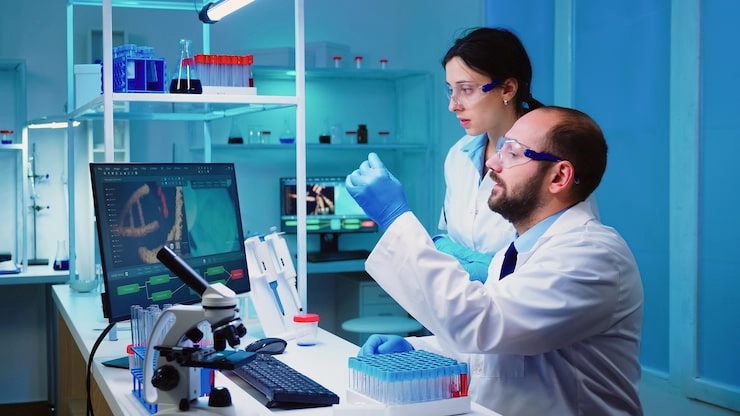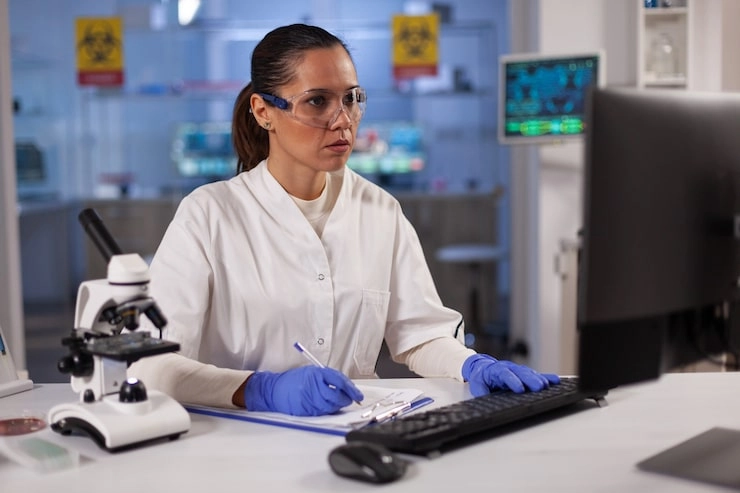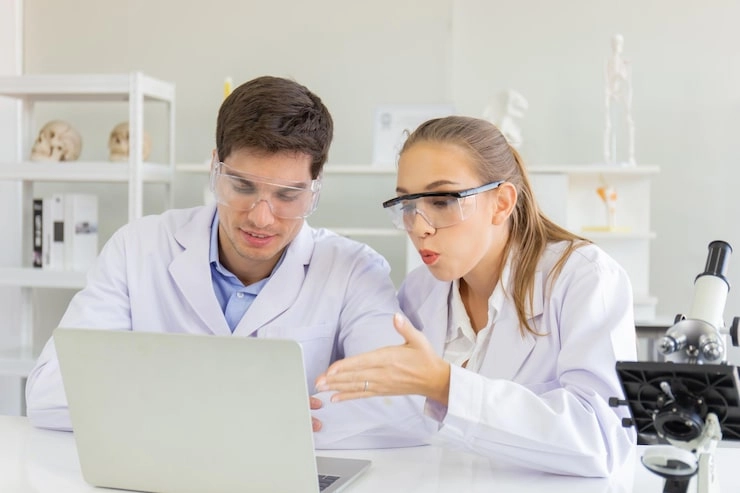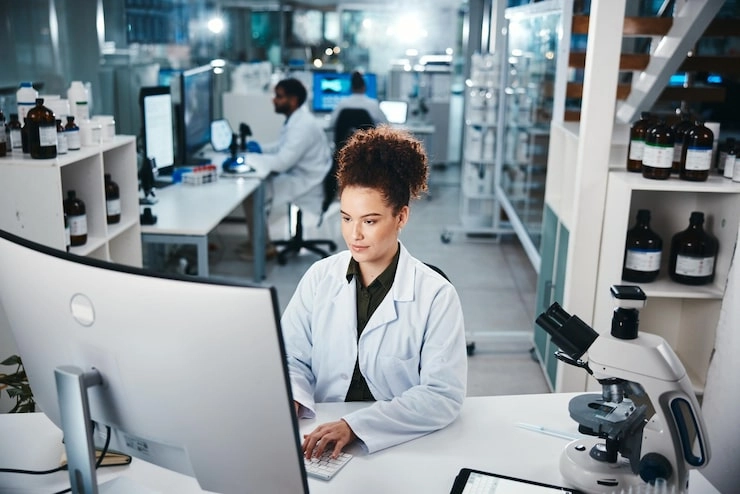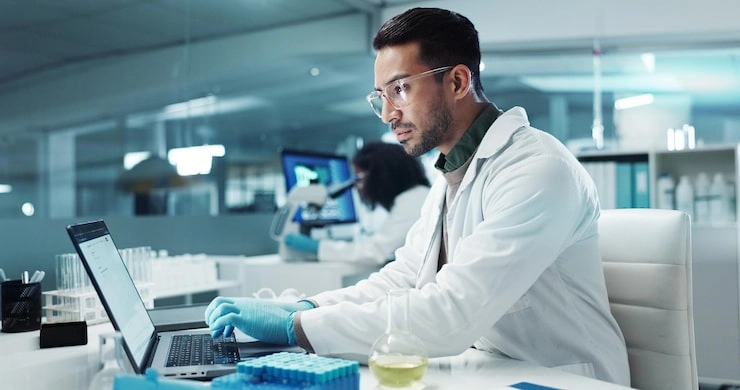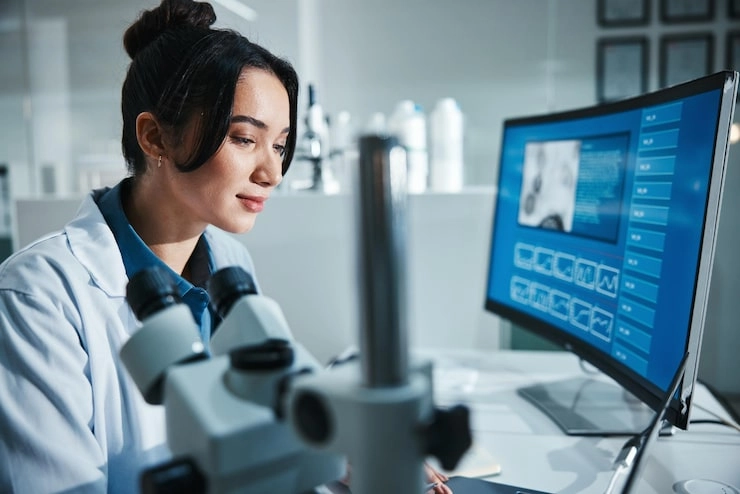
Gas chromatography is a very strong analysis method. Its job is to separate and study substances that can be turned into a gas without breaking down. This method has completely changed how scientists and industries look at complex mixtures. What’s more, it plays a crucial part in many areas, from checking on the environment to making medicines. In gas chromatography (GC), a sample is turned into a gas. Then, an inert gas carries it through a column that has a stationary phase. This allows for separation based on physical and chemical traits. Its great performance, sensitivity, and flexibility make it one of the most reliable methods in modern analytical chemistry.
The Birth of Gas Chromatography
The appearance of gas chromatography didn’t just happen by itself. In fact, it was the end result of many years of study in the science of separation.
Early Developments in Separation Science
In the early 1900s, a botanist named Mikhail Semenovich Tsvett figured out the basic ideas of chromatography. He created liquid-solid chromatography to separate the pigments in plants. His work was about the liquid phase. However, it set the important foundation for all new chromatography ideas that came later.
The Pioneers Behind the Technique
The big idea of using a gas phase came from Archer John Porter Martin and Richard Laurence Millington Synge in 1941. For this, they later won the Nobel Prize. They suggested that a gas could be used to move things for separation. This was a new concept. Then, A.T. James and Archer Martin made this idea real in the early 1950s by building the first working gas-liquid chromatography (GLC) system. To this day, GLC is still the most common type of GC used for separating organic compounds.
Technological Advancements in Gas Chromatography
The story of gas chromatography is full of major new ideas. These have boosted its performance and precision. They have also made it useful for more applications.
The Shift from Packed to Capillary Columns
The first GC systems had packed columns. These are tubes filled with tiny solid support particles that are coated with a liquid stationary phase. But then, the creation of capillary columns changed everything in the field. These columns are long, thin tubes where the stationary phase is coated right on the inside wall. Capillary columns give much, much better resolution and quicker analysis, so they are the normal choice in today’s systems.
Innovations in Detectors and Injection Systems
Modern ways of injecting samples, like split/splitless injectors, use heated ports where the sample turns into a gas almost instantly. This was a big change. This method keeps the sample in better condition and gives more consistent results. Detectors have also gotten much better, with many different kinds to choose from. These include Flame Ionization (FID), Thermal Conductivity (TCD), Electron-Capture (ECD), Atomic Emission (AED), Chemiluminescence (CS), Photoionization (PID), and Mass Spectrometry (MS).
Integration with Mass Spectrometry and Other Techniques
Putting GC together with mass spectrometry (GC-MS) is a huge step forward. In a GC-MS system, the mass spectrometer checks the masses of the parts as they come out, all through the separation process. It is very powerful. This strong combination gives both clear identification and measurement with amazing accuracy.
Core Principles and Functionality of Gas Chromatography
To get how gas chromatography works, you have to look at its main parts and how it operates.
The Role of Carrier Gases and Stationary Phases
The mobile phase is a gas that doesn’t react chemically. Its purpose is to carry the analyte molecules through the hot column. Common carrier gases are helium, nitrogen, hydrogen, and argon. The stationary phase is either a solid adsorbent, used in a method called gas-solid chromatography (GSC), or it is a liquid. This liquid is coated on an inert support or the column wall, which is known as gas-liquid chromatography (GLC).
Column Configurations and Their Applications
Columns are picked based on what the job needs. For example, packed columns are still used for certain jobs like gas analysis. On the other hand, high-resolution capillary columns are the standard choice for complex mixtures. Columns are made to separate compounds based on things like their boiling points, polarity, or the size of their molecules.
Types of Detectors Used in Modern Systems
Detectors are very important. They are needed to spot the components as they leave the column. You could say the Mass Spectrometer (MS) is the strongest of all GC detectors because it can give information about a substance’s structure. However, every detector has its own special strengths. For instance, FID is perfect for hydrocarbons because it is very sensitive, while ECD is great at finding halogenated compounds.
Ứng dụng giữa các ngành công nghiệp
Gas chromatography is a key technology in a lot of different industries. It gives vital information about chemical makeup and helps with quality control.
- Environmental Monitoring and Pollutant Detection: Air quality control teams often use GC paired with FID or MS to find and measure pollutants in air samples. This is a big deal. Thus, it’s extremely useful for meeting regulations and doing environmental safety checks.
- Pharmaceutical Quality Control and Drug Analysis: GC-MS is used a lot in drug testing. It identifies active pharmaceutical ingredients and finds any impurities. This method is used for many tasks in the drug industry, like measuring leftover solvents in drug products.
- Food Safety Testing and Flavor Profiling: Gas chromatography allows for the exact measurement of flavors, smells, additives, and possible contaminants like pesticides in food. It’s very precise. This helps with both making sure food is safe and creating new products.
- Petrochemical Analysis and Refining Processes: Gas chromatography is one of the most common methods for checking hydrocarbon mixtures. It is very helpful. It helps figure out the composition of crude oil and natural gas for refining and also checks the quality of fuel.
Benefits and Limitations of Gas Chromatography
Gas chromatography is very effective, but it has both good points and some limits.
- High Sensitivity and Selectivity: A major benefit of chromatography is its wide measurement range, from ppm levels up to 100 percent. This is a big plus. It lets it find a huge number of components with great repeatability.
- Speed, Efficiency, and Automation: Today’s GC systems can do analyses very quickly. They have automatic features for injecting samples, controlling temperature, and handling data. So, this makes them perfect for places that need to run many tests.
- Constraints on Sample Type: A big limitation is that you can only really analyze samples that are volatile or thermally stable. This is a drawback. This holds it back from being used to analyze non-volatile or thermally unstable compounds, like big biomolecules or polymers.
The Evolving Role of Gas Chromatography in Modern Science
Gas chromatography keeps changing with brand-new ideas that make it even more important.
- Data Integration and Software-Driven Analysis: GC systems now come with advanced software. This software helps with getting data in real-time, matching spectra, and automation. As a result, this improves how reliable and easy to use they are.
- Miniaturization Trends for Field Applications: Small, portable GC devices are becoming more common. This is a new trend. They allow for on-the-spot environmental testing or fast forensic analysis.
- Sustainability Considerations in Instrument Design: There is a new focus on eco-friendly designs. These designs try to use less carrier gas (like using hydrogen instead of helium), create less waste, and use less power. This brings GC technology in line with the ideas of green analytical chemistry.
The Role of Modern Instrumentation: A Look at PERSEE’s Solutions
PERSEE Analytical is a leader in creating new things in gas chromatography instruments.
Overview of PERSEE’s Commitment to Innovation in Chromatography
PERSEE is known around the world as a maker of analytical instruments. The company works on providing high-performance GC systems that are made for many different uses.
Focus on Quality, Precision, and User-Friendly Design
PERSEE instruments are made to be simple to use. They do this without sacrificing analytical precision. This makes them great for both expert labs and places that do regular quality control checks.
Highlight Products like the M7 GC-MS System and G5 GC Analyzer
PERSEE’s M7 GC-MS System combines strong mass spectrometry features with exact chromatographic separation.
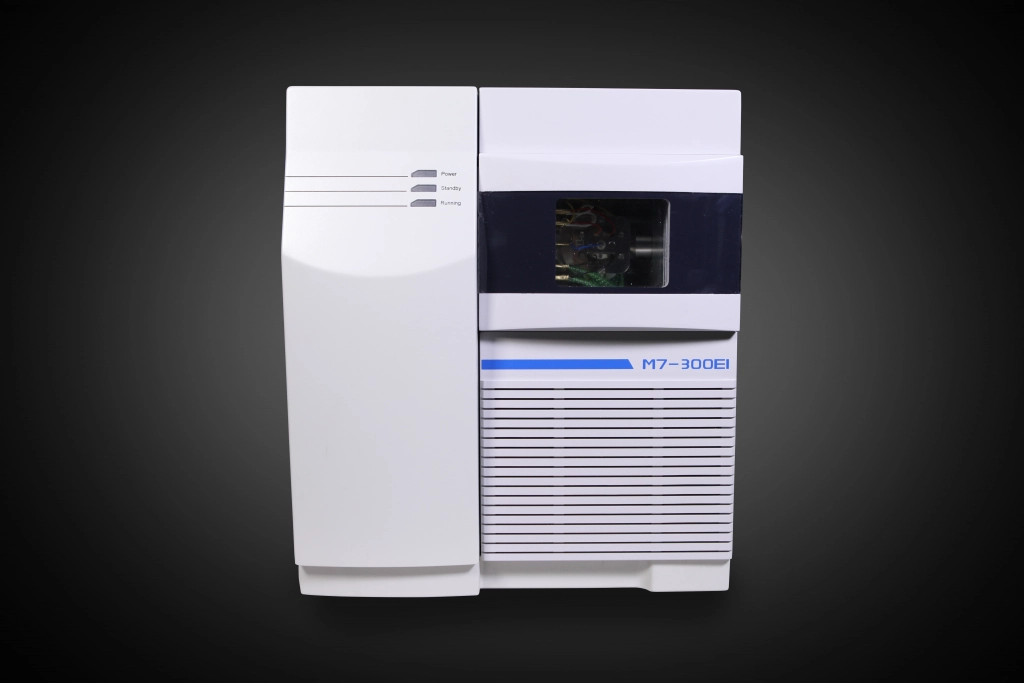
Besides that, the G5 GC Analyzer has advanced detector setups that are great for analyzing petrochemicals.

Global Reach with Reliable Support Services
PERSEE has distribution networks all over the world. This is important. Because of this, the company makes sure to provide technical support, training, and excellent service for labs everywhere.
Conclusion: The Enduring Relevance of Gas Chromatography
From its solid roots in the past all the way to modern roles in science and business, gas chromatography stays a key method for analysis. It’s vital. That strength in handing out quick and spot-on outcomes keeps it a must in our speedy lab scenes today. Besides, with tech pushing forward, GC keeps shifting—turning sharper, more eco-kind, and way simpler to grab hold of than ever.
Câu hỏi thường gặp
Q1: What is gas chromatography mainly used for?
A: Gas chromatography mostly splits up and checks out compounds that shift to gas form without falling apart. It pops up everywhere—from environmental scans, drug making, food safety probes, oil checks, to crime scene digs.
Q2: Is GC better than HPLC for all types of samples?
A: No. Sure, GC shines bright on volatile stuff with top-notch detail and keen senses, yet HPLC wins out for non-gas-friendly or heat-shy items. Think proteins, salts, or big bio-molecules here.
Q3: Can gas chromatography detect trace-level pollutants?
A: Yes, for sure. Thanks to super-sensitive spotters like the Electron-Capture Detector (ECD) or teaming up with a Mass Spectrometer (MS), GC nails down tiny pollutant traces in air or water grabs with dead-on precision.



